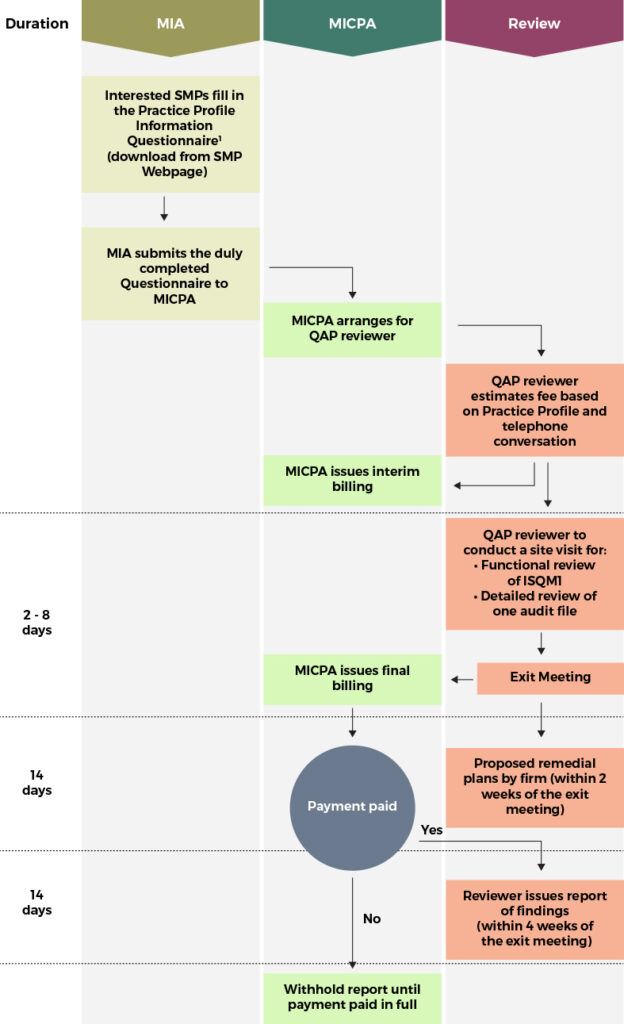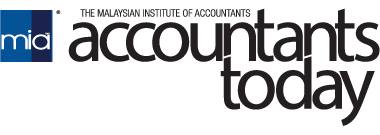By SMP Department, Professional Practices & Technical
The Institute’s Practice Review (PR) Framework is set to undergo changes starting 1 July 2024, aimed at enhancing audit quality. This article delves deeper into the new elements being introduced, particularly focusing on the Peer Review process for audit firms (AF) with a Type 3 rating and the Quality Assessment Programme (QAP). By providing a detailed comparative analysis of these two approaches, this article aims to enhance clarity and understanding among practitioners, facilitating their adaptation to the new framework and promoting continuous improvement in audit practices.
Order 3A and 3B
Under the revised PR Framework, there are two (2) types of orders that can be determined by the Practice Review Committee (PRC), which are order 3A and order 3B. The AF is required to engage either a Peer Reviewer or undergo a Quality Assessment Programme (QAP) based on the PRC’s order on Type 3 firms.
- Order 3A: The firm is required to engage a Peer Reviewer.
- Order 3B: The firm is required to undergo a Quality Assessment Programme (QAP).
The rectification process shall be completed within 24 months upon receipts of the final PR reports. Following this, a fresh review of the firm will be conducted to assess the effectiveness of the rectification measures implemented. It is imperative that all necessary actions are taken within the specified timeframe to ensure compliance and improvement. Timely completion of the rectification process is crucial for maintaining regulatory compliance and enhancing the overall audit quality of the firm.
These changes reflect a strategic shift towards more personalised and rigorous oversight of audit practices, especially for those firms that have been identified as needing significant improvement in their auditing standards.
For more detailed information about the new Practice Review Framework, practitioners are encouraged to refer to related articles and FAQs published by the MIA:
- Revision of Practice Review (PR) Framework Effective 1 July 2024 published on 21 November 2023 and
- Frequently Asked Questions (FAQs) on the Peer Review Process under the Practice Review Committee (PRC)’s Order for Type 3 Firms published on 3 January 2024.
Part 1 of this article intends to provide further clarification on the Quality Assessment Programme, a strategic collaboration between MIA and MICPA to promote continuous improvement in audit quality in Malaysia.
The QAP
The QAP is a structured review of a MIA Member firm by reviewer(s) appointed by MICPA. The review of the whole firm will comprise two parts:
- A review of the firm’s compliance with International Standard of Quality Management (ISQM) 1, and;
- A review of the documentation of one completed audit engagement.
The review will be conducted at the firm’s premises. At the end of the review period, the QAP reviewer(s) will provide a report on the findings and the reviewed firm will provide the proposed remedial action plans for implementation.
Fee
The fees are variable depending on the firm size and complexity of the audit engagement reviewed. The charges are RM1,200 per man day and the maximum charge is capped at RM10,000, excluding SST and reimbursements.
Duration
The estimated duration for a site visit under the QAP Programme is 2 to 8 days.
Process Flow of QAP

¹ Practice Profile Information Questionnaire
Testimonials from QAP participating firms and common findings of the QAP can be found in the following articles published in e-AT:
• Quality Assessment Programme: Common Findings of the Firm-level and Engagement-level Review
Transitioning to Peer Review or Quality Assessment Programme
As audit firms prepare to transition to the new framework, it is essential to understand the different methodologies and requirements of Peer Review and the Quality Assessment Programme (QAP). While both approaches aim to elevate audit quality, they provide distinct pathways and processes to achieve this goal. A Peer Review allows for a more personalised improvement process through peer guidance, whereas QAP offers a formal and structured evaluation by experienced reviewers. Part 2 of this article will provide a detailed comparison of Peer Review and QAP to help practitioners navigate the new system and make informed decisions.
Part 2 of this article on Peer Review and the QAP can be accessed here.







